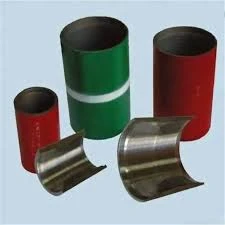- Afrikaans
- Albanian
- Amharic
- Arabic
- Armenian
- Azerbaijani
- Basque
- Belarusian
- Bengali
- Bosnian
- Bulgarian
- Catalan
- Cebuano
- Corsican
- Croatian
- Czech
- Danish
- Dutch
- English
- Esperanto
- Estonian
- Finnish
- French
- Frisian
- Galician
- Georgian
- German
- Greek
- Gujarati
- Haitian Creole
- hausa
- hawaiian
- Hebrew
- Hindi
- Miao
- Hungarian
- Icelandic
- igbo
- Indonesian
- irish
- Italian
- Japanese
- Javanese
- Kannada
- kazakh
- Khmer
- Rwandese
- Korean
- Kurdish
- Kyrgyz
- Lao
- Latin
- Latvian
- Lithuanian
- Luxembourgish
- Macedonian
- Malgashi
- Malay
- Malayalam
- Maltese
- Maori
- Marathi
- Mongolian
- Myanmar
- Nepali
- Norwegian
- Norwegian
- Occitan
- Pashto
- Persian
- Polish
- Portuguese
- Punjabi
- Romanian
- Russian
- Samoan
- Scottish Gaelic
- Serbian
- Sesotho
- Shona
- Sindhi
- Sinhala
- Slovak
- Slovenian
- Somali
- Spanish
- Sundanese
- Swahili
- Swedish
- Tagalog
- Tajik
- Tamil
- Tatar
- Telugu
- Thai
- Turkish
- Turkmen
- Ukrainian
- Urdu
- Uighur
- Uzbek
- Vietnamese
- Welsh
- Bantu
- Yiddish
- Yoruba
- Zulu
Understanding Bull Plug Applications in Oil and Gas Industry Operations and Maintenance
Understanding Bull Plug in Oil and Gas Industry
In the oil and gas industry, the term bull plug may not be as widely recognized as other terminology, but it plays a crucial role in the operational efficiency and safety of oil and gas extraction processes. This article aims to shed light on what bull plugs are, their importance in the industry, and best practices associated with their use.
What is a Bull Plug?
A bull plug is a type of fitting or connector used primarily in pipelines, tanks, and various types of equipment within the oil and gas sector. Designed to seal off a pipeline or equipment, a bull plug is typically used during maintenance or in situations where a section of the pipeline or tank needs to be isolated from the system. It ensures that the flow of oil, gas, or other fluids is securely contained, preventing leaks and potential hazards.
Bull plugs come in various sizes and materials, including metal and rubber, depending on the specific requirements of the operation. Their design usually consists of a threaded system or a tight fit to ensure that it can withstand high pressures and extreme conditions often associated with oil and gas extraction.
Importance in Operations
The importance of bull plugs in the oil and gas industry cannot be understated
. They are essential for several key reasons1. Safety One of the primary functions of bull plugs is to enhance safety standards in oil and gas operations. By effectively sealing pipelines and equipment, they prevent hazardous leaks and spills that could lead to detrimental environmental impacts or human safety risks.
2. Maintenance Regular maintenance is critical in the oil and gas sector to ensure smooth operations and prevent equipment failure. Bull plugs allow maintenance crews to isolate sections of the pipeline or equipment safely, facilitating repairs without interrupting the flow of oil or gas in the other sections.
3. Cost-Effectiveness Efficient management of equipment and pipeline integrity can lead to significant cost savings. By utilizing bull plugs during maintenance, companies can reduce downtime and ensure that their operations are not severely impacted by leaks or equipment failures.
bull plug oil and gas

4. Operational Efficiency When properly implemented, bull plugs contribute to the overall efficiency of oil and gas operations. They minimize the risk of accidents, leaks, and equipment failures, which can disrupt the supply chain and negatively impact production levels.
Best Practices in Using Bull Plugs
To maximize the benefits of bull plugs in oil and gas operations, several best practices should be followed
- Regular Inspections Routine inspections of bull plugs and their installation points are essential. This ensures that they are in good condition and capable of performing their sealing functions effectively.
- Proper Installation Following manufacturer guidelines for installation is crucial. Incorrect installation can lead to leaks and failures, undermining the safety and efficiency of operations.
- Material Selection Selecting the appropriate material for bull plugs is critical. Factors such as temperature, pressure, and the type of fluid being transported should guide material selection to ensure that the plugs can withstand operational conditions.
- Training and Safety Protocols Ensure that personnel involved in the maintenance and handling of bull plugs are adequately trained in safety protocols. Understanding how to correctly use and handle these fittings can prevent accidents and enhance operational safety.
Conclusion
The role of bull plugs in the oil and gas industry is vital for ensuring safety, facilitating maintenance, and promoting operational efficiency. Understanding their function, benefits, and proper management practices are essential for professionals in the field. As the industry continues to evolve, staying informed about the best practices and technologies related to equipment such as bull plugs will be critical for maintaining high standards of safety and productivity in oil and gas operations.
-
Tubing Pup Joints: Essential Components for Oil and Gas OperationsNewsJul.10,2025
-
Pup Joints: Essential Components for Reliable Drilling OperationsNewsJul.10,2025
-
Pipe Couplings: Connecting Your World EfficientlyNewsJul.10,2025
-
Mastering Oilfield Operations with Quality Tubing and CasingNewsJul.10,2025
-
High-Quality Casing Couplings for Every NeedNewsJul.10,2025
-
Boost Your Drilling Efficiency with Premium Crossover Tools & Seating NipplesNewsJul.10,2025







